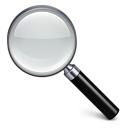Compartments 2 is a new home inventory and organization app enhanced for OS X Mavericks. See what you can do with Compartments below.
 Protect Your Valuables
Protect Your Valuables
Easily add the most important information about your items for home inventory purposes, like replacement value, photos & receipts. With Compartments, you will have everything you need in the event of theft or disaster. Plus, Compartments tracks your warranty information, including contact info and expiration.
 Organize Your Collections
Organize Your Collections
Whether you collect coins, cards, movies, books, or anything else, Compartments lets you define custom item types to track the attributes you care about. Then, you can create smart collections based on those items. For example, create a smart collection that automatically includes all movies with a certain director or rating.
 Find Your Stuff
Find Your Stuff
Use Compartments search to find anything in a flash. Or, quickly see a list of all your electronics. Or, view everything you’ve tagged as valuable. Compartments has live search that updates results as you type. You can even search in thumbnail mode to find exactly what you are looking for.
More Features
- Track details about your home (or homes) with Building View. See your home on a map, and keep track of the total value of everything in your home, as well as details like purchase price and square footage.
- Create multiple buildings—ideal if you want to track home and business possessions, for example.
- Easy image import—just drag and drop to add a thumbnail image to an item.
- Attach receipts, manuals and more—attach unlimited files or any file type to any item, and preview them with quick look.
- Free updates—Compartments for Mac includes free updates for life.
- Retina ready—entire interface re-done in retina, with over 100 retina icons.
Technical Stuff
Compartments 2 requires OS X Mavericks, and is available in the Mac App Store. It’s database is built on Core Data, which is a rock-solid, fast database, which will allow us to implement powerful cloud-based sync options in the very near future. It is natively written in Objective-C, and specifically designed for the latest version of OS X.
